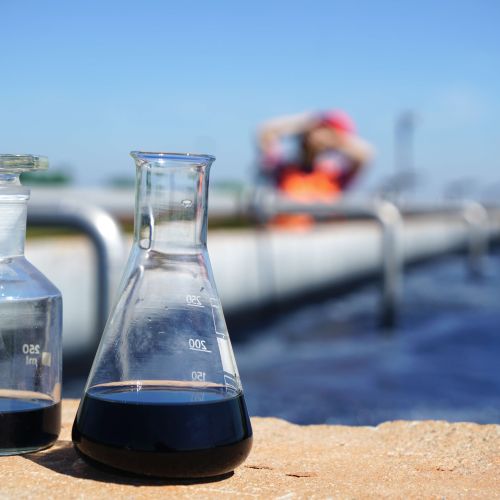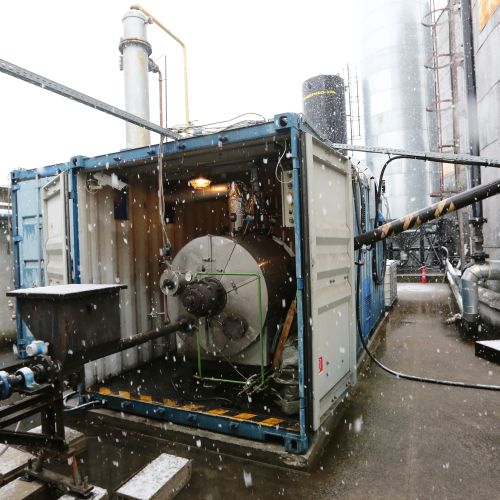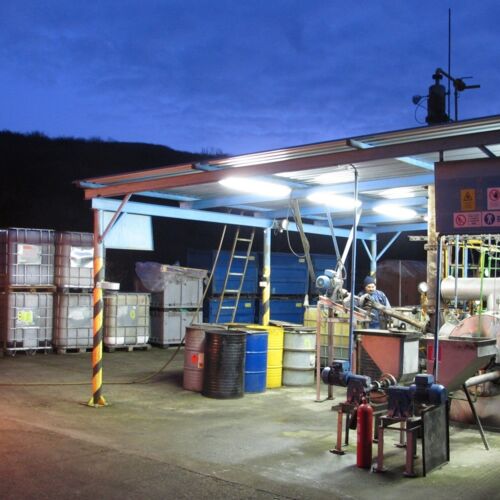- 15. January 2024
- /
- 2.5 minutes of reading

In a world where plastic has become an integral part of our daily lives, the mounting concern over plastic waste has led to groundbreaking innovations in recycling technologies. Among these, pyrolysis and chemical recycling stand out as promising methods that could reshape the fate of plastic waste. Let's embark on a journey to understand how these processes work and their potential to revolutionize our approach to plastic disposal.
Understanding the Plastic Predicament
Plastic pollution has become a global crisis, with millions of tons of plastic waste entering our oceans and landfills each year. Traditional recycling methods, while valuable, have limitations. Many types of plastics are challenging to recycle due to contamination, complexity, and degradation during the recycling process.
Enter Pyrolysis: Turning Plastic Waste into High value products
Pyrolysis, often dubbed as the "plastic alchemy," is a thermal degradation process that transforms plastic waste into valuable resources without the need for oxygen. The process involves heating plastic at high temperatures in the absence of air, causing it to break down into its constituent elements.
This innovative technique yields three main products:
- Liquid Hydrocarbons: The primary output of pyrolysis is a liquid composed of hydrocarbons. This substance can be further refined into fuels like diesel or used as a raw material in the production of new plastics.
- Syngas: Pyrolysis also generates syngas, a mixture of hydrogen and carbon monoxide. Syngas has potential applications in energy generation or as a precursor for the synthesis of various chemicals.
- Charcoal/Carbon Residue: The solid residue left after pyrolysis, often in the form of charcoal or carbon black, can find applications in industries such as construction or as a filtration material.
Chemical Recycling: Breaking Down the Molecular Structure
While pyrolysis focuses on the thermal degradation of plastics, chemical recycling takes a different approach by breaking down the molecular structure of plastic polymers. This method involves using chemical processes to convert plastic waste into monomers or other valuable chemicals.
Key advantages of chemical recycling include:
- High-quality Output: Chemical recycling can produce high-quality materials, often comparable to virgin plastics, making it a viable solution for the creation of new products.
- Wide Applicability: Unlike mechanical recycling, chemical recycling is not limited by the need for clean and sorted plastics. It can process a broader range of plastic types and qualities.
- Closed-Loop Systems: Chemical recycling can contribute to closed-loop systems, enabling a more sustainable and circular economy for plastics.
The Road Ahead: Integrating Pyrolysis and Chemical Recycling
The potential of pyrolysis and chemical recycling lies not just in their individual strengths but in their synergy. By combining these processes, we can create a comprehensive and efficient system for dealing with plastic waste. This integrated approach allows us to harness the benefits of both thermal and chemical transformations, maximizing resource recovery and minimizing environmental impact.
As we navigate the challenges posed by plastic waste, the alchemy of pyrolysis and chemical recycling offers a glimmer of hope for a sustainable future. By transforming plastic waste into valuable resources, we can shift towards a circular economy that values and reuses our planet's precious materials. The journey to a plastic-free world may be complex, but with innovative technologies like pyrolysis and chemical recycling, we are taking significant steps toward a more sustainable tomorrow.





